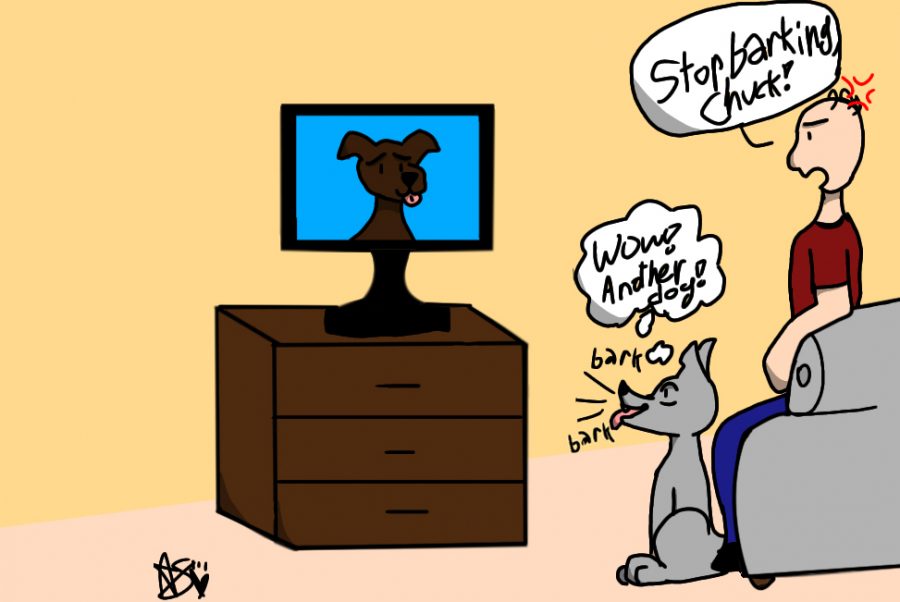WHY DO DOGS WATCH TV?
The strange science behind your dog’s fixation with TV!
Though dogs may not join us in tears when watching an emotional drama or burst out in laughter during
a comedy. Dogs can watch TV; in fact, they can differentiate and process the images which appear on
the screen. However, what a dog sees varies to what a human perceives for two key factors: Color range
and Flicker Fusion.
Flicker fusion is light flicking rapidly to create façade of continuous light. In fact, flicker fusion is
responsible for what allows us to perceive motion on a TV. According to Psychology Today a human
needs 55 hertz (number of flickers per second) for light to appear constant versus a dog, which is able
to comprehend up to 75 hertz. Thus, a dog motion can appear sluggish on the TV, which means that
action scene which leaves you on the edge of your seat for your dog is the equivalent is of watching a
flipbook . This may change with the advancement of televisions. Most TVs nowadays are 60 Hertz TV
soon to be replaced by 120 Hz Televisions. Soon, dogs may be on the edge of their seats as well.
Human eyes can distinguish the colors blue, green, red this is due to color detecting cells called a cone.
Humans have 3 cones in their eyes, while dogs only have two cones. According to LiveScience this causes
dogs to perceive only blue and yellow but not distinguish from red to green. Color-vision scientist Jay
Neitz at the University of Washington states that a dog’s vision is like that of someone with red to green
color blindness. Thus, when dogs watch TV red is muted to them.
With the combination of the understanding of Flicker Fusion and Color range we can understand a dog’s
perception of TV, but if a dog can actually interpret the images shown on TV is an entirely different
question?
A study published in Animal Cognition states that dogs can discern between their own species and
humans from visual cues. In the study, 9 dogs were shown about a pair of 144 pictures to choose from.
The picture contained dogs breeds, crossbreeds, humans, other domestic animals, and wild animals. All
nine dogs categorized their own species, which is believed be caused by primal instinct in which same
species get together for social life. This shows us that when dogs encounter images on television they
can tell apart people and animals. It also explains why dogs bark when they see a fellow dog on the TV. If
dogs actually enjoy watching TV is dependent on their personality and sometimes their breed. According
to National Geographic, hounds are driven by smell and may not be excited by visuals appearing on TV
while, on the other hand, Herding Dogs, maybe stimulated by moving images on the TV. Dogs interest in
TV may also be influenced by their owners as well as, according to Science Direct a dog tends to mimic
their owner’s gaze or social cues.

My name is River Hunter, and I live in San Antonio Texas. I am a junior at iUniversityPrep, and I am a new student on this platform. I am passionate about...

Hi! I'm a Staff Assistant here in iHoot, this is my second year for iHoot and iUP! I enjoy riding dirt bikes, drawing, reading, riding bicycles, and listening...















